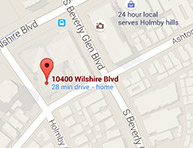What is the meaning of the ‘badeken’ — veiling the bride before the wedding ceremony? Some associate it with Rebecca, who upon meeting her future husband Isaac, placed a veil over her face. Others, perhaps more fancifully, associate it with Jacob and Leah, since Jacob intended to marry Rachel and woke up to her older sister.
The first time I conducted a wedding however, a deeper meaning to the veiling ceremony seemed clear to me. The Kotzker Rebbe once sharply rebuked his disciples — “Masks! Where are your faces?” He was pointing out that we all wear masks, or veils — professional, personal, sometimes deliberately and sometimes without even realizing it. To be authentic in a world of judgment is frightening. So we reveal parts of ourselves to selected people.
But there should be at least one person in this world before whom you can be fully seen, before whom you do not need to wear a veil. If we are lucky, we can share our lives with a partner who really knows, accepts and loves us. At the end of the wedding ceremony, the veil is lifted and the bride and groom look into each other’s eyes. Here is love, here is acceptance, here is the presence of God — without a veil.


